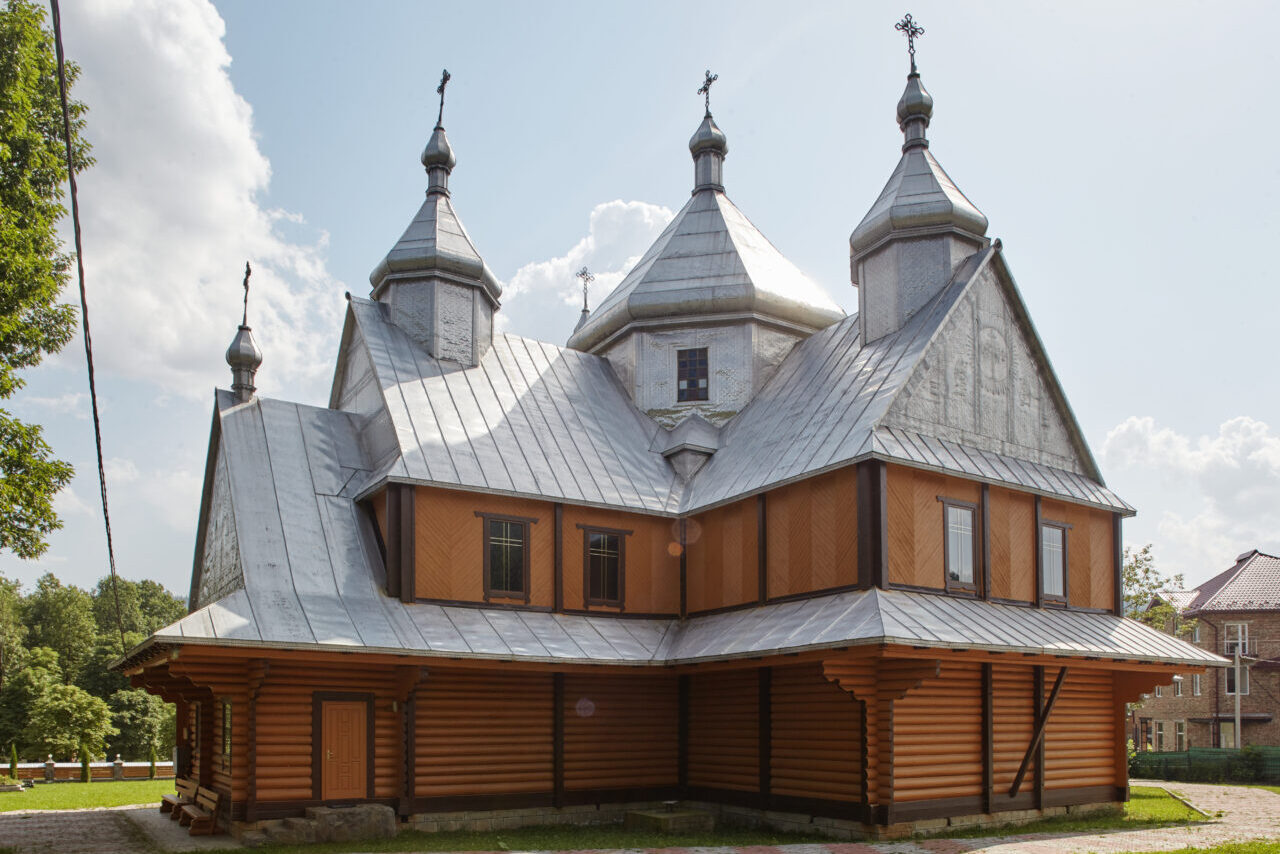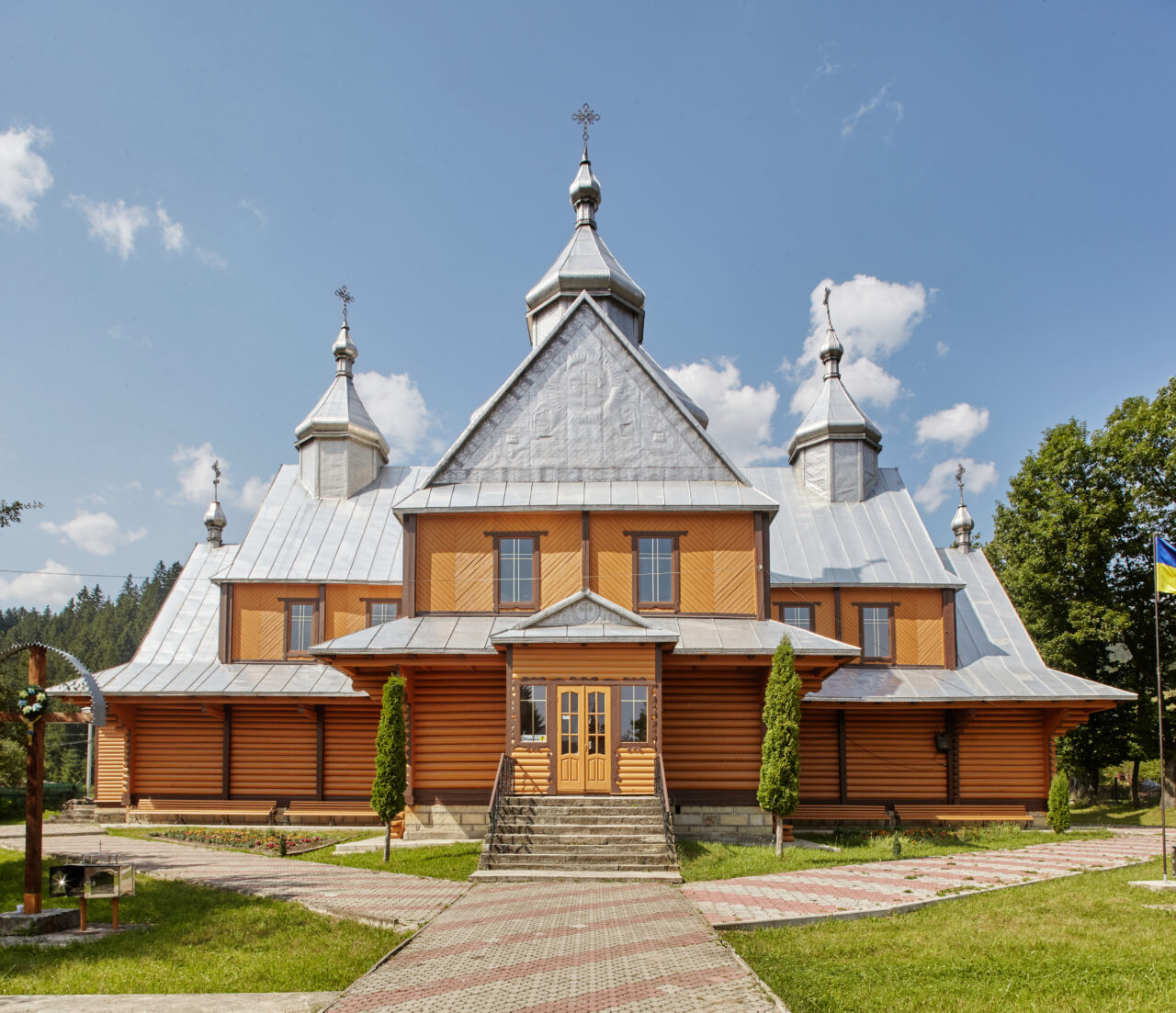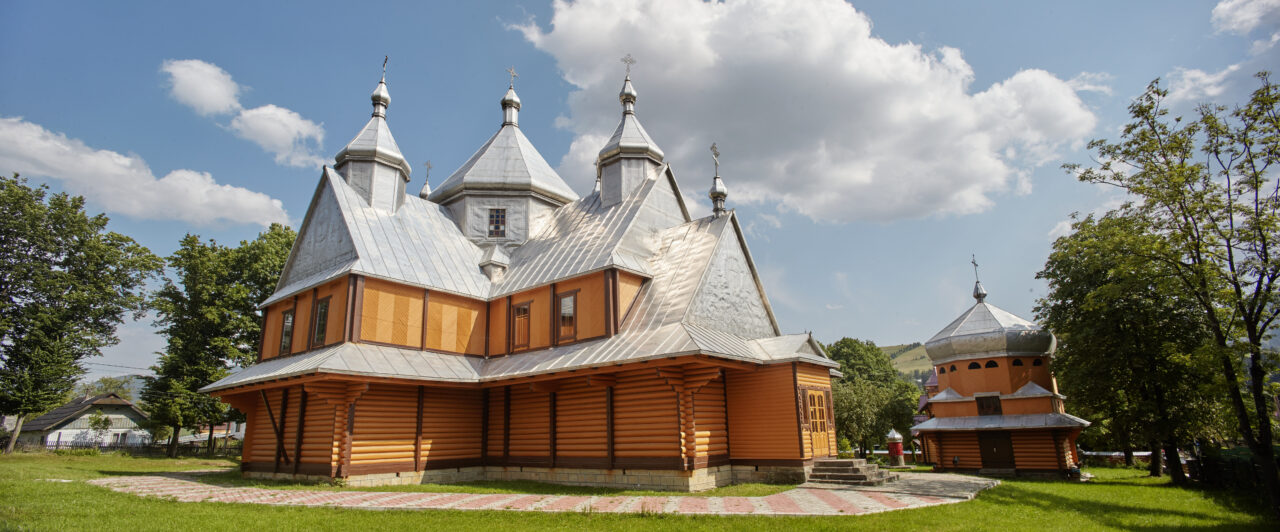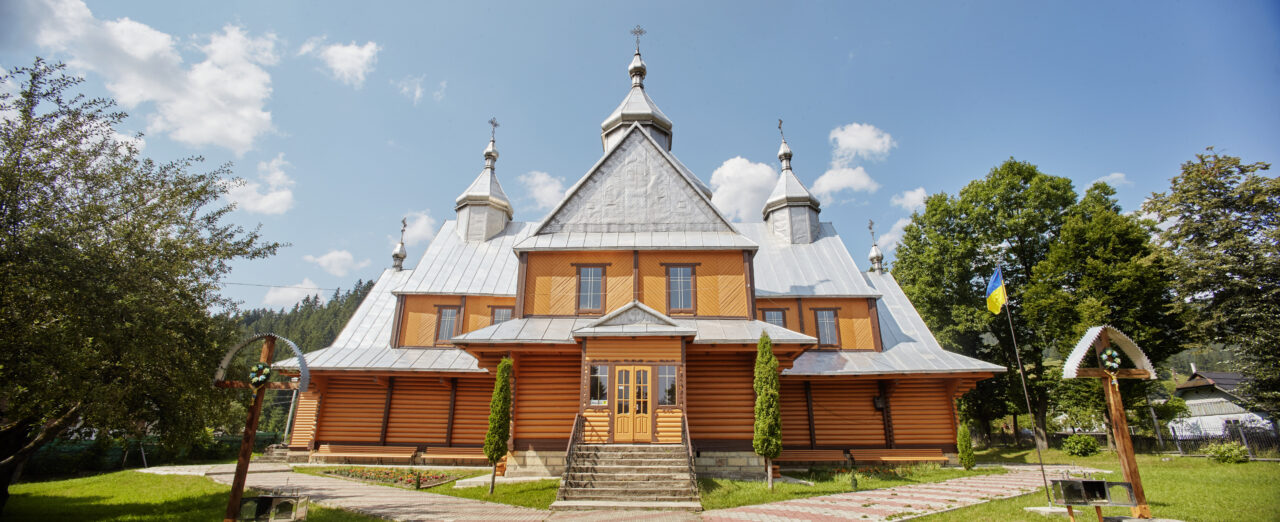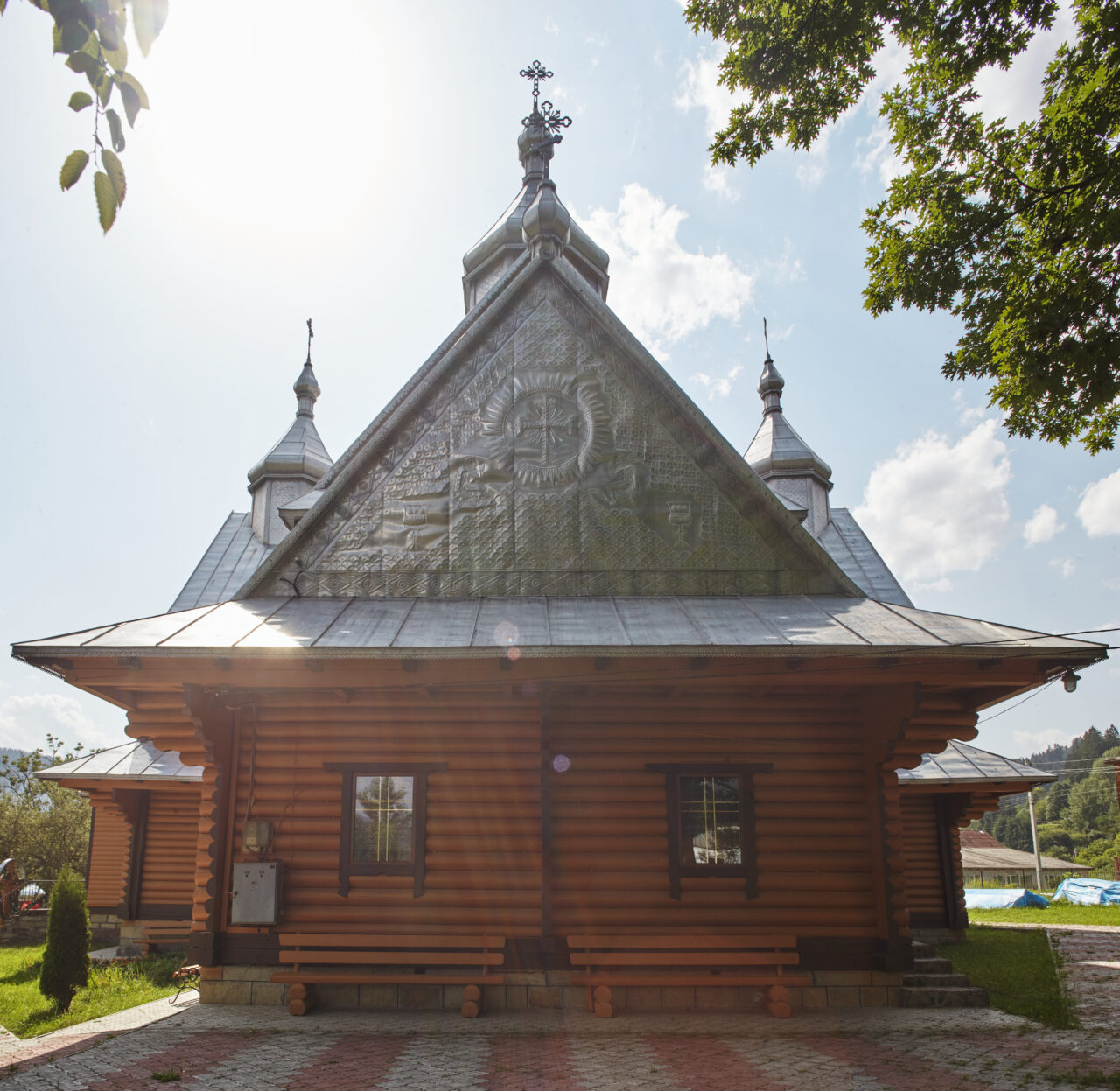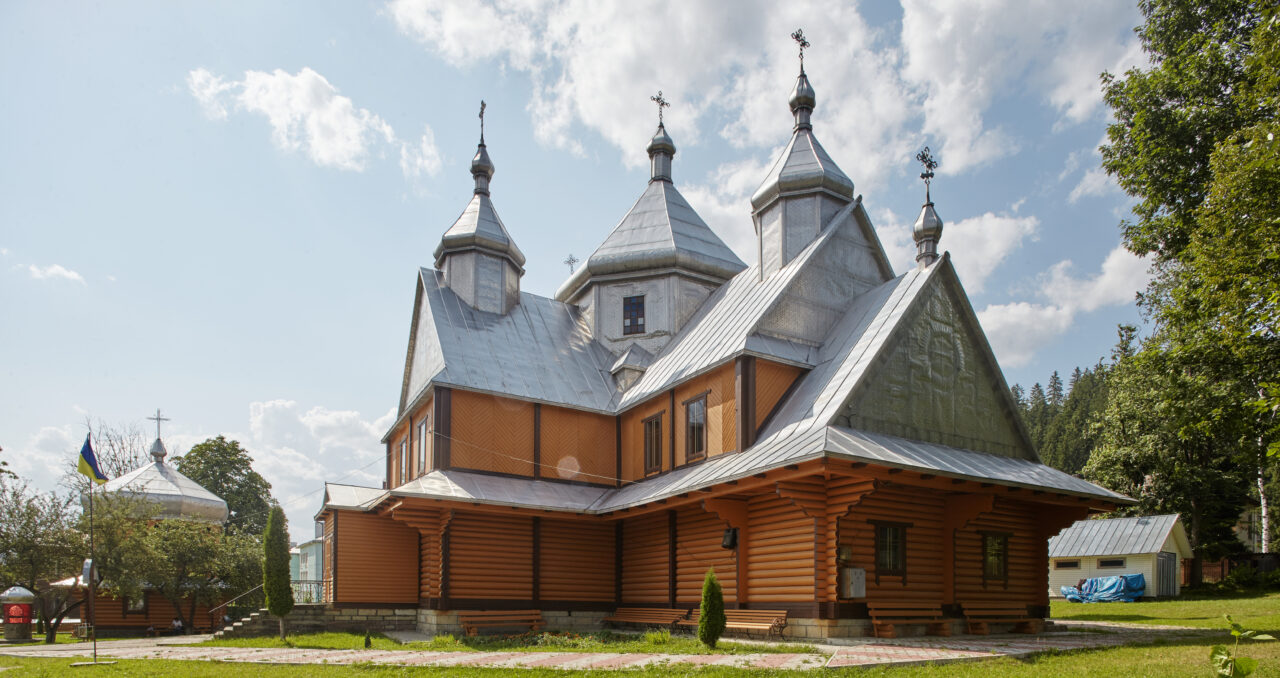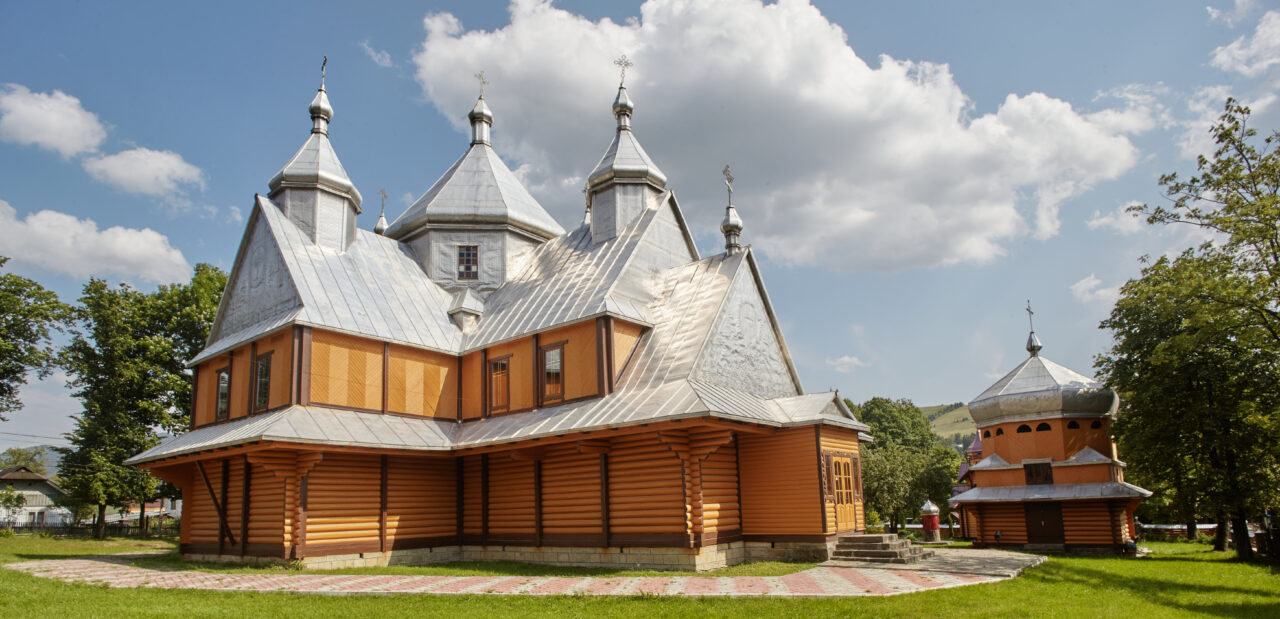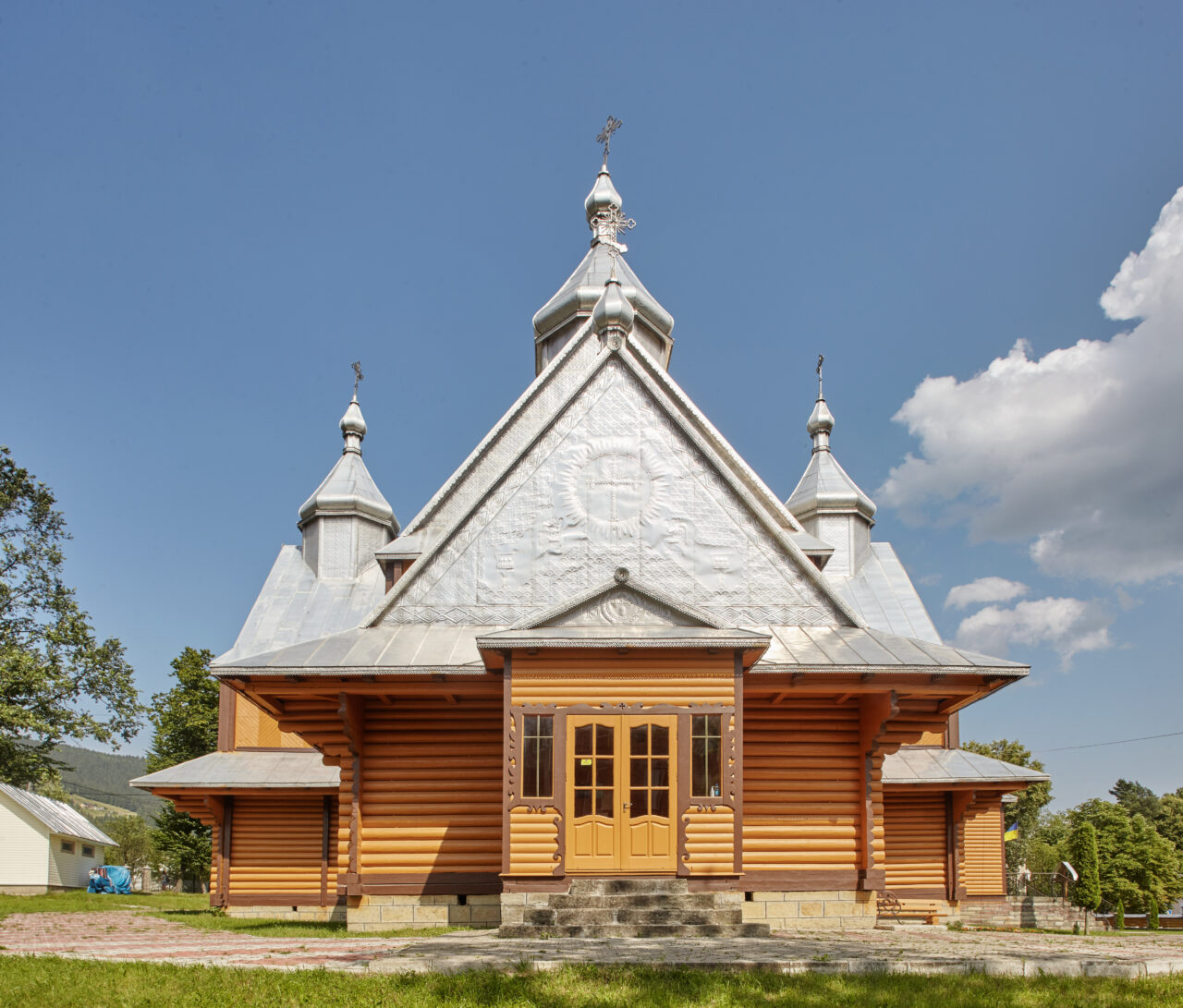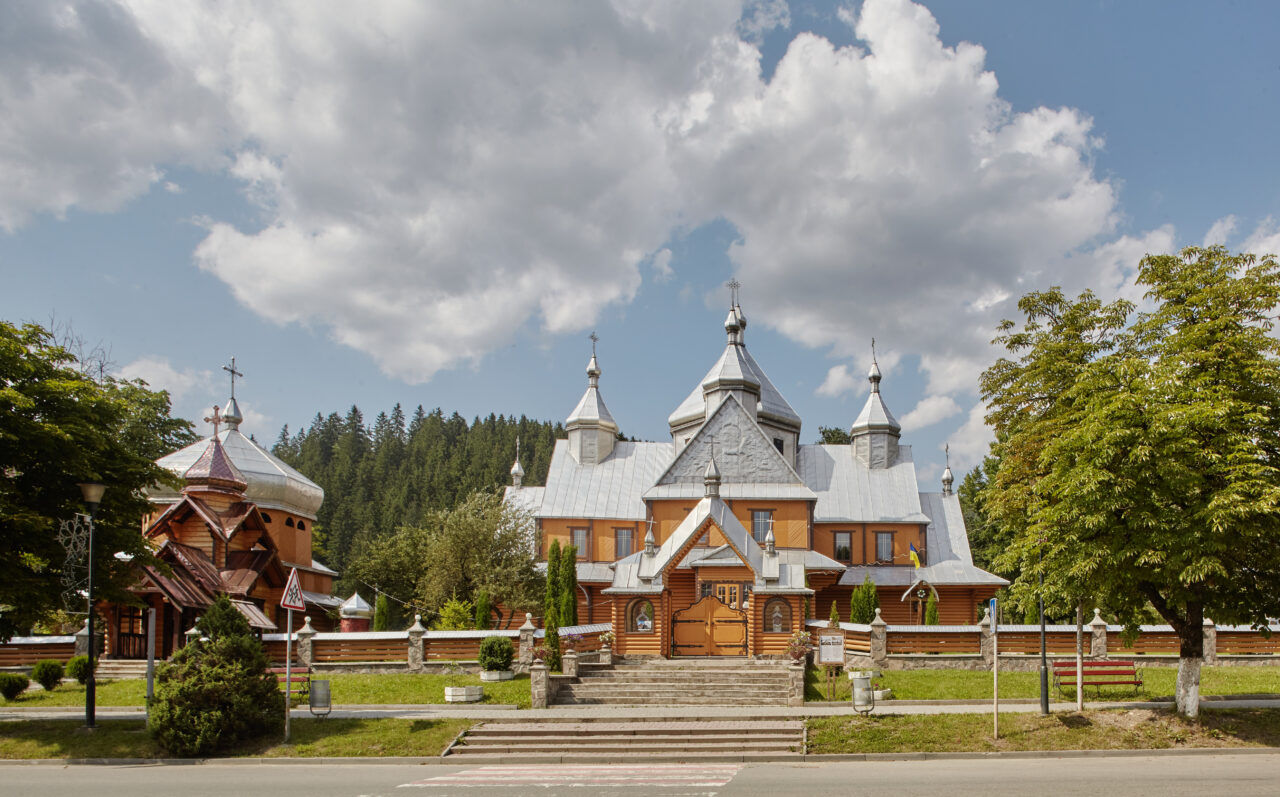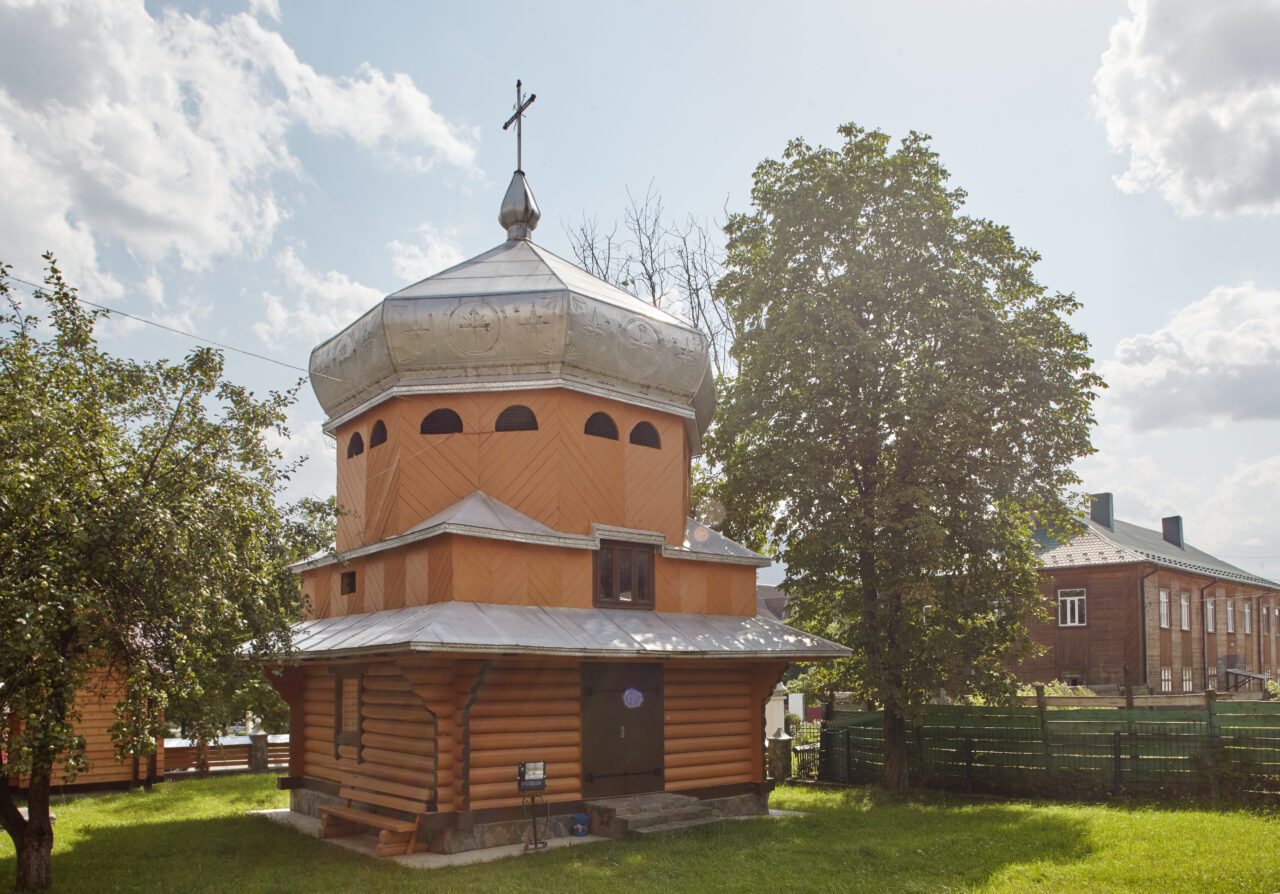Verkhovyna (Zhabie until 1962) village is famous for its amazing nature, a large number of architectural monuments, unique Hutsul color and curative climate. The first written mention of the settlement dates back to 1424 then it and the monastery on the Rybnytsia River was given by the Lithuanian prince Svydryhailo as a gift to the local nobleman Vlad Drahosymovych. There is a legend that the first settler in the valley of Chornyi Cheremosh River was Zhabka (a frog), which gave the former name to the settlement.
The first church in Zhabie was built in about 1675. It looked like a shed, without a cross, dome, windows or a bell tower. Instead of windows there were wooden shutters, which in warm weather were open to illuminate the room; in cloudy weather the shrine was illuminated with two wooden lanterns. Instead of a bell tower there was a small bell, hanging at the main entrance.
Later the second, real church was built. On the altar there was a crowned icon of the Virgin Mary, a carved cross, four wooden icons with apostles painted on them, two painted linen gonfalons. In the narthex there were two bells.
The third church in Verkhovyna was located opposite the modern shrine, in 1944 during the Second World War it burned down. In the postwar period the perishers didn’t have a church, so they went to worship in neighboring villages, Kryvorivnia and Ilka.
In 1994 the community built a new church. It was constructed in the Hutsul style, which reflects the unique local color. It is rectangular, cruciform five-domed building, which is located behind the figured wooden-stone fence and carved gate.
The church of the Assumption of the Virgin Mary is one of the biggest wooden shrines in Ukraine. Nowadays this functioning temple belongs to the Orthodox Church in Ukraine community.

